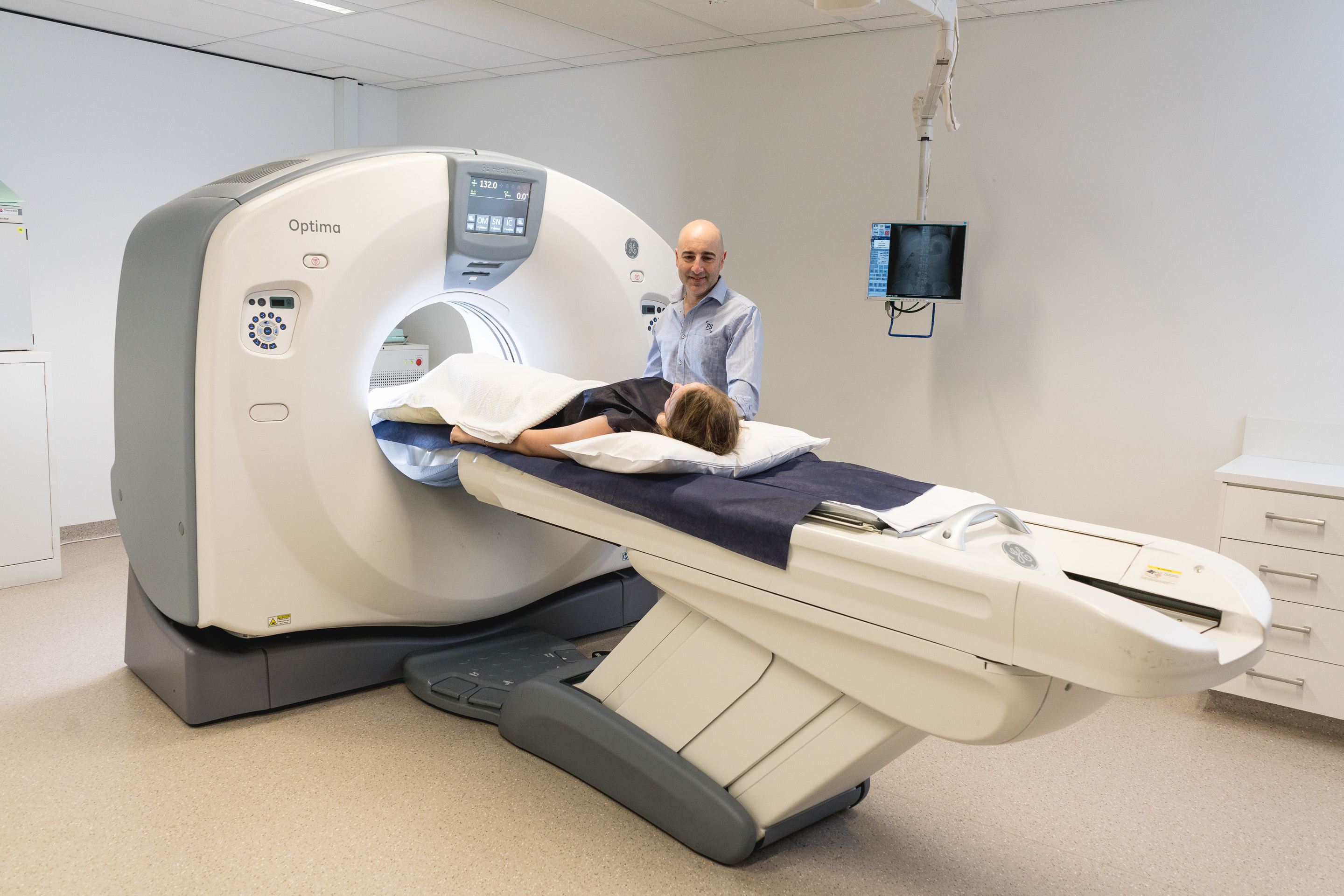
Nerve Root Block
What is a Nerve Root Block?
A nerve root block or injection is a procedure which involves a mixture of local anaesthetic and steroid being injected around the swollen/inflamed nerve root to help relieve pain and inflammation.
Why do I need a Nerve Root Block?
Nerve roots are the parts of the nerves which come out from the spinal cord. Disorders such as prolapsed discs can cause swelling and irritation of the nerve roots. This can cause considerable pain in the spine and along the nerves and also referred pain in the arms or legs. A nerve root injection is given with the intention of relieving pain by reducing swelling that is associated with the affected/irritated nerve
Procedure
The patient will be asked to lie face down on the bed of the CT table. Once the patient is in position an antiseptic solution will be used to clean the patient’s back. A Radiologist specialising in this procedure will use the CT as a guide to ensure the needle tip is in the correct position, near the nerve root. Contrast (X-ray dye) may be injected to confirm the position of the needle, then a mixture of local anaesthetic and cortisone solution is injected into the area.
The cortisone component of the injection usually starts to work about 2-3 days after the injection. The effects of the injection last on average 3-6 months.
Are there any risks or side effects?
There are always risks and/or side effects associated with any treatment/procedure. Overall however, the risks are low. The more common side effects that patients can sometimes experience are discomfort, redness and bruising at the site of the injection.
If any of these symptoms occur, they will generally resolve within a few days. Occasionally some patients may feel tingling or numbness in the region of the injection. The sensation may extend down one or both legs or arms (depending on whether we are injecting the upper or lower back) immediately after the nerve root injection. The tingling or numbness will usually go away within a few hours, and is generally caused by irritation of the nerve root during the injection.
Post Procedure
- It is very important that you have someone to accompany you home. We advise that you do not drive for a minimum of 6 hours after the procedure
- You may notice some tenderness or bruising at the site of the injection. If required, apply ice to the affected area and take paracetamol (eg: Panadol) to help with relief of these symptoms
- You should refrain from exercise or strenuous activity for up to one week after the procedure depending on what your doctor has told you. Please follow your treating practitioners advice on how best to recommence pre-treatment activities
- If after 48 hours following your injection you are experiencing any fever, swelling, localised heat or increasing pain, you should contact your doctor without delay
Things we need to know from you
Please inform the Radiology staff of any of the following:
- If you have allergies to any medication, anaesthetic agent or X-ray contrast
- If you are taking any blood thinning medications (i.e. Aspirin, Warfarin, Clopidogrel etc)
- If you are feeling unwell or need to cancel your appointment please ring our office as soon as possible on (08) 8229 2100
Note to female patients: If you are pregnant, or suspect you may be, or if you are breast feeding please advise us before your appointment.
Important things you must bring to your appointment
- A referral from your doctor
- Medicare card
- Pension/Concession card
- Any previous films/x-rays
- WorkCover/Motor Vehicle Accident claim details (if applicable) i.e. claim number, name of employer or insurer
Concerns
Please feel free to contact our staff at any time if you have any questions or concerns on (08) 8229 2100


Fees and billing
We charge a competitive co-payment for services, fees will vary between different types of examinations.
